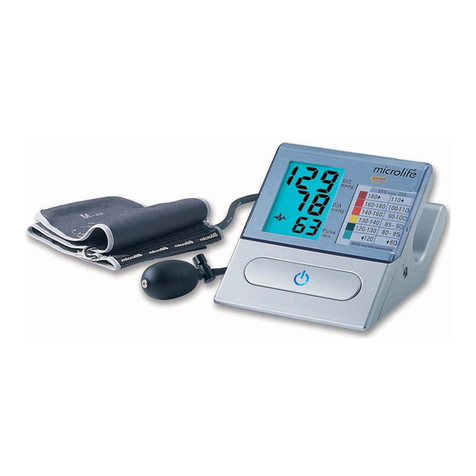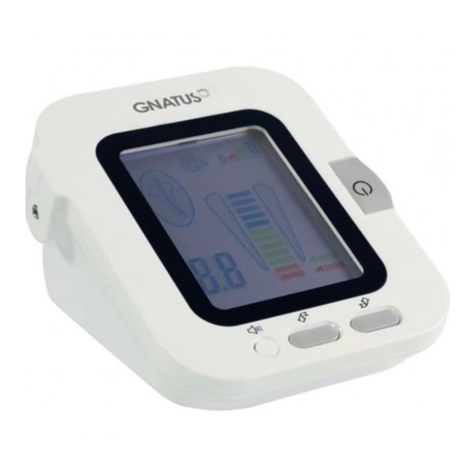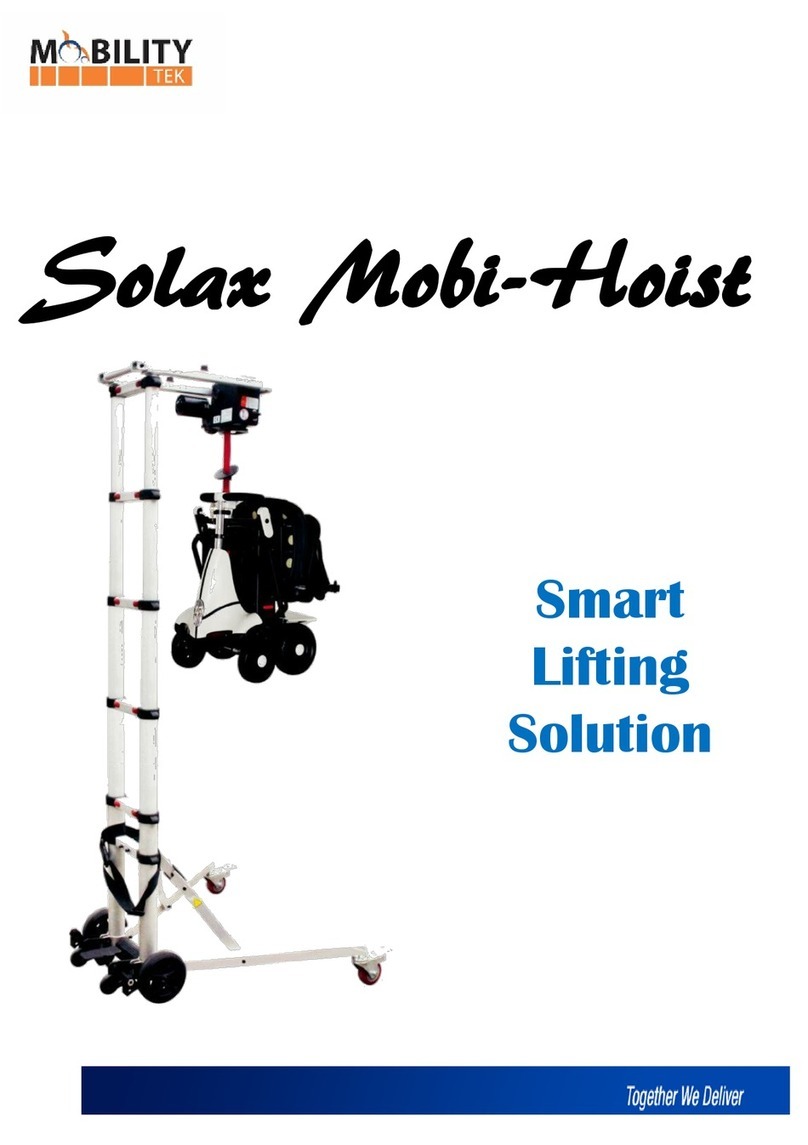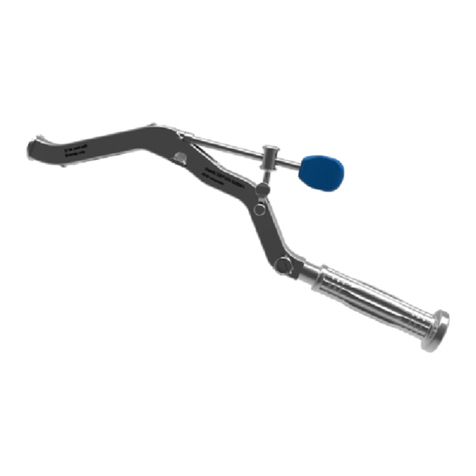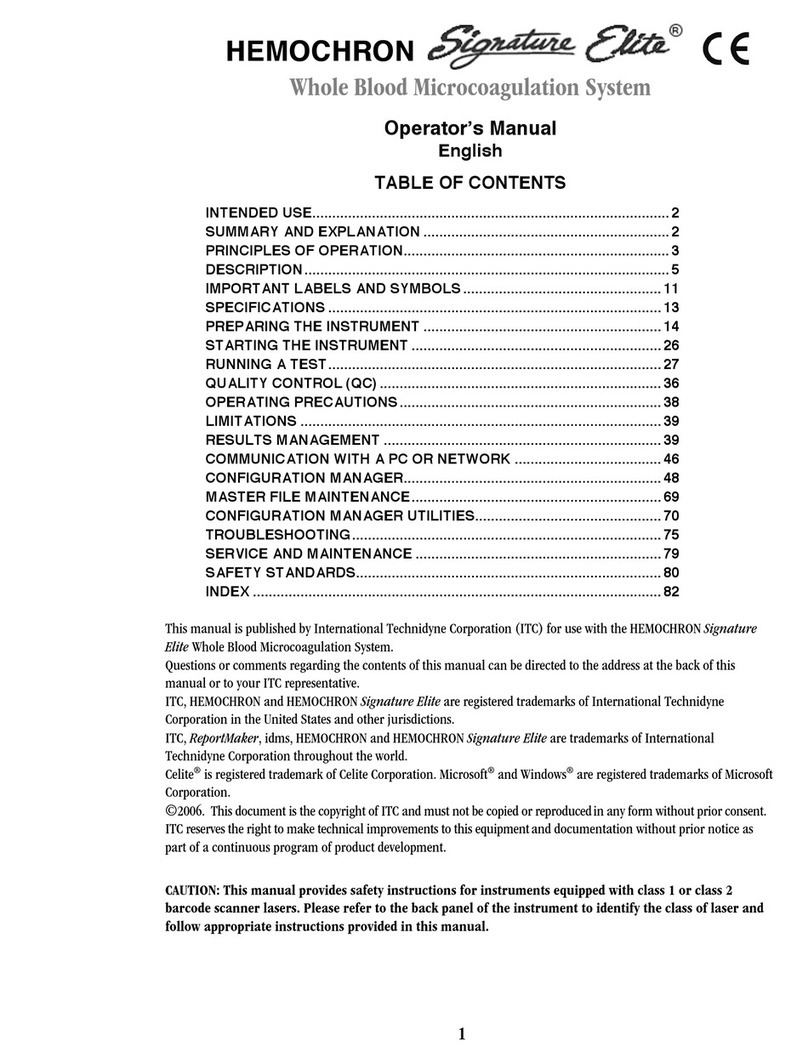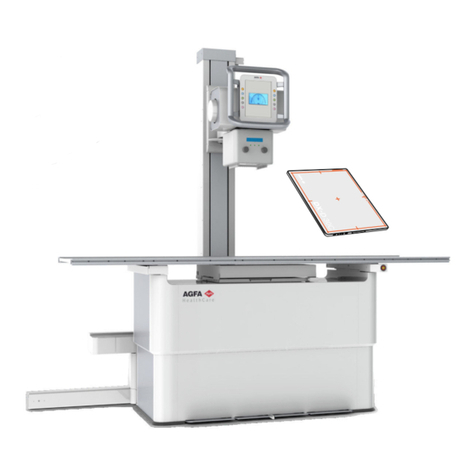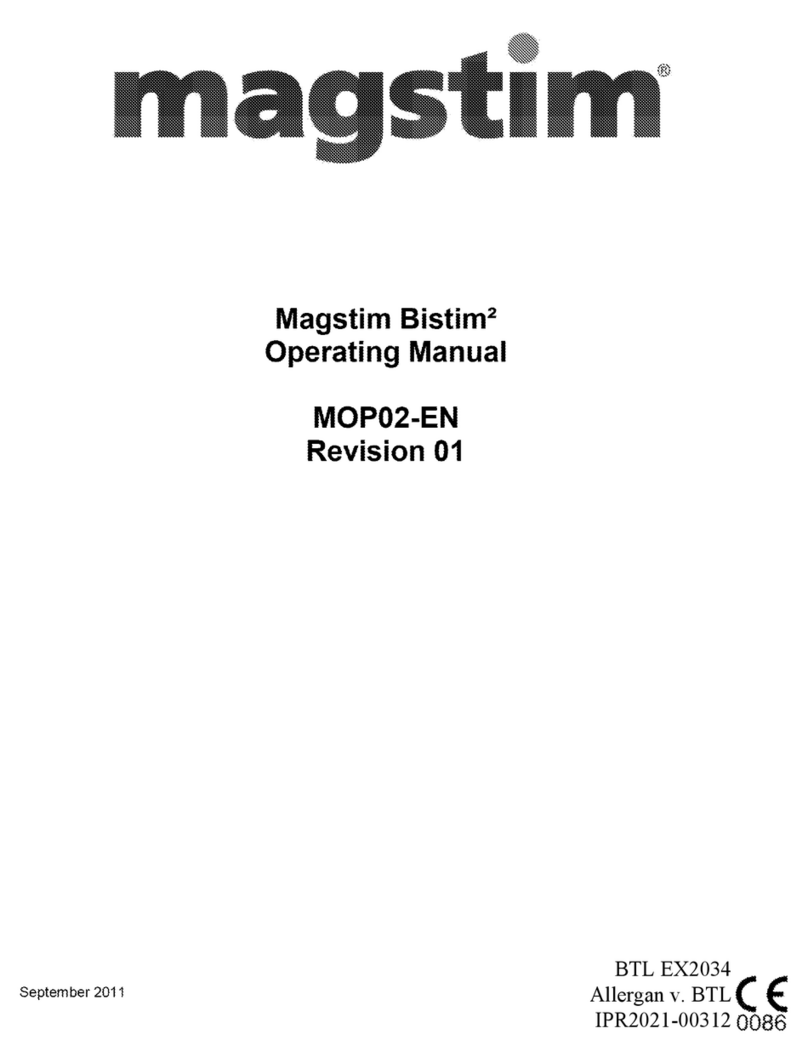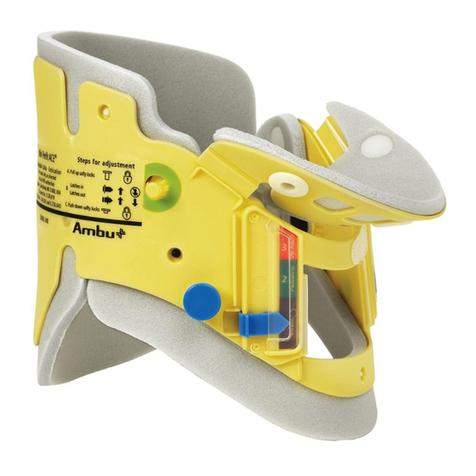OstomyCure TIES User manual

CARE MANUAL
TIES®
Transcutaneous Implant Evacuaon System

|2|
DESCRIPTIONCONTENTS
DESCRIPTION 3
Intended Applicaon 3
WARNINGS 4
DESCRIPTION OF THE PRODUCTS 5
Terminology 5
Quanes and sizes 7
Recommended standard accessories 7
QUICK GUIDE 8
PHASE ONE |INITIAL HEALING PERIOD 9
Avoid the following 9
Skin barrier use 9
Assembling the stabilizer 10
Emptying the ostomy bag 11
Replacing the skin barrier 11
REMOVING THE TURNBULL ADAPTOR 13
Turnbull adaptor removal 13
Ileum trimming 13
PHASE TWO |FINAL HEALING 14
Ileum healing 14
Temporary lid use 14
PHASE THREE |USING THE LID 15
Lid acclimasaon 15
Emptying the intesne 16
Cleaning 17
Schedule for using the lid 17
DISCOMFORT AND RISKS 18
Surgical and device risks 18
Funconal risks 18
Remedies in case of leakage 18
MANUFACTURER 19
Address 19
Declaraon of Conformity 19
Patents and Trademarks 19
INTENDED APPLICATION

|3|
DESCRIPTION
The Transcutaneous Implant Evacuaon System (TIES®) is a complete method for providing a connent
ileostomy for the treatment of inammatory, autoimmune or tumour intesnal diseases. The TIES® system
intends to provide a permanent, paent-controlled connent stoma that obviates the need to wear a bag
aer removal of the large intesne.
CONTENTS
INDICATIONS
Paents with diseases such as ulcerave colis, familial polyposis, mulple colonic cancers, Crohn’s
disease or other requiring elecve colectomy followed by a permanent ileostomy. Paents with a failing
convenonal ileostomy, connent ileostomy, ileo rectal anastomosis or ileal pouch-anal anastomosis. Male
or female, 18 years or older.
CONTRAINDICATIONS
Any clinically signicant anatomical deviaon, abnormal, baseline laboratory result which aects the
paent’s suitability or puts the paent at risk. Severe illness which may put the paent at risk or may
inuence the
result or aect the paent’s ability to take care of the implant. Paents with a diagnosis of undetermined
colis, recurrent parastomal hernia or recurrent incisional hernia. Paents under immuno-suppressive/
depressive or an-coagulaon treatments. Condion associated with the risk of poor compliance, e.g.
demena, self-destrucve personality disorder, excessive use of alcohol or drug abuse.
INTENDED APPLICATION

|4|
WARNINGS
Follow all warnings and cauon statements. If the system is to funcon as intended,
the healing me and associated instrucons must be complied with.
WARNING! The implant needs me to heal as it grows rmly into the correct posion.
Avoid connuous and sudden loads that could aect the implant and the
surrounding skin. This includes pulling, pressing, twisng and bending. Take
parcular care when cleaning the implant and the surrounding skin, and when
using the accessories.
WARNING! Avoid the use of a catheter. If a catheter needs to be inserted, always use a
so catheter and water soluble gel. Be careful not to touch the inside of the
implant cylinder and be very gentle when feeding the catheter into the
intesne to avoid irritang the ileum ssue or disturbing the implant-ssue
integraon.
WARNING! If the implant is subjected to extreme mechanical forces (accidents, physical
abuse, misuse, forceful catheterizaon, or similar), ask your physician to
gently verify that the implant-ssue integraon has not been damaged.

|5|
WARNINGS
TIES® (Transcutaneous Implant Evacuaon System) is intended to create a connent stoma using an implant,
the TIES® Port, and associated lid, the TIES® Lid.
DESCRIPTION OF THE PRODUCTS
IMPLANT, TIES® PORT
TERMINOLOGY
The round secon protruding through the skin
provides stable aachment for the Lid and is easy
to keep clean.
The implanted secon (not shown), is in the form of
a mesh, providing strong ssue ingrowth.
Used during the rst weeks to provide opmum
ingrowth condions by securing the ileum above
the Port.
ILEUM SECURING DEVICE, TURNBULL ADAPTOR
The Stabilizer secures the implant and provides
support above skin level during the ingrowth
period. The Stabilizer consists of a Spacer pair and
a Locking Ring.
All Stabilizer components can be re-used several
mes and withstand boiling water. They can also
be cleaned in 70 % alcohol or 2 % room-tempered
Clorox soluon (household bleach). Rinse carefully
aerwards. Replace the Stabilizer every week.
STABILIZER KIT, STABILIZER KIT

|6|
DESCRIPTION OF THE PRODUCTS
Used to lock the Spacer pair in place around the
implant.
The Lid is used to achieve a connent stoma aer
the intesne has grown into the implant and
healed completely.
The Lid is re-usable and can be cleaned in the same
way as the Stabilizer. Replace the Lid every week.
Always check the outside of the packaging for any damage. If the packaging has been damaged the
product must not be used. Contact your clinic or OstomyCure if any item is missing or damaged.
LID, TIES® LID
Comes as a pair and is used together with a
Locking Ring.
LOCKING RING, LOCKING RING
SPACER, SPACER

|7|
DESCRIPTION OF THE PRODUCTS
TIES® Port system is summarised in the table below.
IMPLANT INNER DIAMETER OUTER DIAMETER
D24 23,2 mm 28,4 mm
STABILIZER KIT CONTAINS
5 Spacer pairs
5 Locking Rings
PRODUCT RECOMMENDED SIZE COMMENT
Ostomy skin barrier 70 mm Matching the ostomy bag
Ostomy bag 70 mm Matching the ostomy skin barrier
Adhesive remover - Spray or wipes
Irrigaon sleeve - Disposable or Flushable Drainage Sleeve
QUANTITIES AND SIZES
RECOMMENDED STANDARD ACCESSORIES

|8|
QUICK GUIDE
X 2 X 1
Cut a 40 mm hole and centre the
skin barrier around the implant.
Assemble the Stabilizer with a Spacer pair around the implant and use the Locking Ring.
The ostomy bag ts
over the Stabilizer.
Bathe gently with tap water when cleaning, do not rub. Dry
carefully.
Use the Lid only when the implant is completely healed.
Never twist, push, bend or pull the implant or the surrounding skin!

|9|
PHASE ONE | INITIAL HEALING PERIOD
Never twist, push, bend or pull the implant or the surrounding skin! This is very important to prevent
disturbing the ingrowth.
AVOID THE FOLLOWING
• The ostomy skin barrier must be axed to
clean and dry skin.
• The protruding end of the intesne has
been turned inside out on the Turnbull
Adaptor on top of the implant and secured
with a few sutures.
• Cut out a 40 mm diameter hole in the
ostomy skin barrier. Best is to use a pair
of curved scissors, following the guiding
paern on the skin barrier.
• Accurately centre the ostomy skin barrier
with the cut-out hole over and around
the implant and x it gently to the clean,
dry skin.
SKIN BARRIER USE

|10|
• Place two Spacers on the skin barrier around the implant. Align an arrow on the Spacer pair to an
arrow on the Turnbull Adaptor and gently press the Spacer pair together, locking into the groove
on the implant just below the Turnbull Adaptor.
Be very careful not to put any stress to the implant and do not rotate the Turnbull Adaptor! Also, be
careful not to insert the Spacers between the skin and the base of the cylinder top.
• Hold the Spacer pair rmly with one hand. Put on the Locking Ring (line up the posioning
indexes) and carefully turn it clockwise with the other hand unl the bayonet locks in place.
• Do not rotate, pull or push on the Spacer pair!
• Place an ostomy bag over the implant and Stabilizer. Gently seal the bag to the skin barrier xing
ange in the usual manner. Take great care not to push against the skin and work only against the
xing ange on the skin barrier.
ASSEMBLING THE STABILIZER
PHASE ONE | INITIAL HEALING PERIOD

|11|
PHASE ONE | INITIAL HEALING PERIOD PHASE ONE | INITIAL HEALING PERIOD
• The length of me between draining or replacing the ostomy bag varies from person to person,
but it normally needs to be emped 2 - 5 mes a day. When removing and replacing the bag, take
great care and work only against the xing ange on the skin barrier.
• Avoid pulling or pressing on the skin barrier itself.
• When replacing the bag, clean the area around the implant and the outside of the implant with
lukewarm water as necessary. Avoid the use of disinfectants.
• During the rst weeks, it is advisable to leave the ostomy skin barrier in place as long as possible,
normally up to 7 days. Use a protecve skin cream or ointment to prevent skin irritaon.
• Early or frequent replacement of the skin barrier may disturb the ingrowth (implant – ssue
integraon).
• Hold the Spacer pair rmly with one hand, and turn the Locking Ring counter-clockwise with the
other hand to open the bayonet lock. Gently remove the Locking Ring.
• Carefully pull the Spacers apart and remove from the implant.
EMPTYING THE OSTOMY BAG
REPLACING THE SKIN BARRIER

|12|
• Carefully li a corner of the ostomy skin barrier. Hold a dampened, nonwoven swab gently against
the skin right next to the skin barrier.
• Do not pull or stretch the skin near the implant, as this may aect healing.
• An adhesive remover spray or wipes are recommended to help loosen the skin barrier. This will
reduce the stress on the skin and minimise the eect on healing. Gently li away the skin barrier,
and spray again as required on the skin under the skin barrier.
• Carefully clean the area around the
implant and the outside of the implant
each me the skin barrier is replaced. Use
lukewarm water and mild soap as needed.
Ordinary tap water is sucient. Avoid the
use of disinfectants.
• Never rub or press on the skin surrounding
the implant.
• Dry completely using so, bathing move-
ments. Leave for a short me to dry in the
air and then apply a new skin barrier and
Stabilizer.
REPLACING THE SKIN BARRIER (connued)
PHASE ONE | INITIAL HEALING PERIOD

|13|
PHASE ONE | INITIAL HEALING PERIOD
Aer three to four weeks the intesne has grown enough into the implant and the Turnbull Adaptor may
be removed. The very end of the intesne protruding outside the implant has now started to wizen and
the sutures are coming loose. Normally the Turnbull Adaptor can be gently removed by your physician
without surgical intervenon. The intesne will reside permanently just at the top of the implant.
Aer another two weeks, it is me to carefully trim o excess parts of the intesne in a simple daycare
surgical procedure.
Alternavely, your surgeon may choose not to acvely trim o excess parts, but rather wait a few more
weeks for the wizening process to complete, thus achieving a “natural trimming” of excess parts of the
intesne.
TURNBULL ADAPTOR REMOVAL
ILEUM TRIMMING
REMOVING THE TURNBULL ADAPTOR

|14|
PHASE TWO | FINAL HEALING
The me for nal healing varies between individuals but is expected to be in the range of two to three
weeks aer trimming (two to three months aer Port implantaon).
It is recommended to use an ostomy skin barrier and an ostomy bag during this me.
The Lid must not be used permanently before nal healing is completed!
Aer the nal trimming, the ileum will need approximately two weeks for healing and rest. Do not at-
tempt to start using the Lid during this period.
Aer ileum recovery and per judgement of your doctor, it is possible to start using the Lid momentarily.
During this period, the Lid may be used occasionally for short periods (up to an hour). Before nal healing
is accomplished, it is important to avoid any build-up of intesnal pressure. This is merely a training and
habituaon phase. Be very observant in avoiding intesnal pressures or discomfort and swily remove the
Lid in such cases. Never use the Lid at night or when risk of falling asleep or not being in full control.
Normal procedure during this phase shall be the use of an ostomy bag.
Immediately remove the Lid if there is a sensaon of intesnal pressure, discomfort or pain connected to
the temporary Lid usage.
ILEUM HEALING
TEMPORARY LID USE
PHASE THREE | USING THE LID
1 2
3 4

|15|
PHASE TWO | FINAL HEALING
LID ACCLIMATISATION
PHASE THREE | USING THE LID
When your physician considers that the intesne has healed completely inside and around the implant,
you can start using the Lid permanently. This normally occurs two to three months aer inial surgery.
In the beginning, the Lid should sll only be used for a few hours at a me to prepare the intesne and
to allow it to expand gently behind the implant. The length of me the Lid is used is gradually increased
causing increased pressure on the intesne. Gradually the intesne develops a natural reservoir behind
the implant. This reservoir means that the intesnal contents do not need to be emped as oen. Expect
several months for this process to be fully completed.
Lid acclimasaon can progress much faster for paents who already have a reservoir when the TIES®
Port is implanted.
When starng to use the Lid for extended periods, a certain amount of discomfort can occur around
the implant and in the abdomen. This is fully normal and only shows that the intesne is adjusng and
expanding. If you experience pain in the abdomen, the lid should be removed. Contact the ostomy nurse or
your physician if the problem persists.
Cross-secon of the implant, skin and intesne with reservoir.
The schedule that has been set up by your physician must be followed when acclimasing to use of the
Lid. How quickly the intesne acclimases to the Lid varies from person to person. If you experience dis-
comfort, the length of me the Lid is used should be shortened. Keep a record of your experience when
acclimasing to the Lid for your follow-up.
Using the Lid means you no longer need to use the ostomy skin barrier, Stabilizer and ostomy bag.

|16|
PHASE THREE | USING THE LID
EMPTYING THE INTESTINE
The length of me between emptying the intesne varies from person to person, but it normally needs to
be emped two to ten mes a day.
For quick procedures, an irrigaon sleeve is recommended. Ax the irrigaon sleeve around the implant
and posion the open end over the toilet. Remove the Lid inside the sleeve. Operate the Lid from the out-
side of the sleeve to avoid soiling of your hands. Use only sucient force to ax and to remove the Lid.
When the Lid has been removed, the intesne can
be emped. Bend slightly forward to empty all the
contents and drain through the irrigaon sleeve.
Should the emptying procedure require more me,
a standard ostomy bag could be temporarily used,
instead of the irrigaon sleeve.
PHASE THREE | USING THE LID

|17|
Aer each emptying, clean the outside of the
implant, the surrounding skin (see PHASE ONE /
REPLACING THE SKIN BARRIER) and the Lid using
lukewarm running water if available. Avoid the use
of disinfectants.
Once the Lid is in connuous use, it should be
replaced every week for hygienic reasons.
PHASE THREE | USING THE LID
CLEANING
SCHEDULE FOR USING THE LID
In the beginning, the Lid should be used for a limited me and a limited number of mes during the day.
A personalised schedule for recommended Lid use shall be drawn up in collaboraon with your physician.
During the acclimasaon period, it is recommended to keep a diary in which you note the actual mes
and duraons of Lid use.
The me for acclimasaon varies from person to person.

|18|
DISCOMFORTS AND RISKS
Potenal discomforts and risks, originang from the surgical procedure or the TIES device itself.
• Redness at the operaon site
• Pain
• Allergic reacon (including to medicaons, anaesthesia or device materials)
• Infecon
• Device misplacement or migraon
• Enterocutaneous stula
• Perforaon of the intesne during inseron of ileum through implant
• Contaminaon of implant with intesnal content during surgery
• Narrow passage or conspaon caused by irritated or swollen intesne
• External violence -skin or body injuries caused by the protruding part of the implant geng
caught or by violent accidents
• In paents with Crohn’s disease or determined colis, there is a risk of recurrence. However, this
risk is in line with the one paents with convenonal ileostomies face. A recurrence may cause
a paral or complete obstrucon of the implant. The implant may have to be removed. Should a
recurrence of Crohn’s disease occur it is not advised to replace the implant. It should be removed
and a convenonal ileostomy should be done.
SURGICAL AND DEVICE RISKS
FUNCTIONAL RISKS
REMEDIES IN CASE OF LEAKAGE
Potenal discomforts and risks regarding the funconal performance of the device related to the embedding
of the implant into the so ssue of the abdomen during the healing period aer surgery.
• Leakage of intesnal liquid between the device and the skin due to
• Ileum retracon
• Too early use of Lid
• Trauma
• Other factors
• Insucient ingrowth of so ssue into the device to ensure a leak-free system
Should the system show incomplete ingrowth inside or outside or being harmed in a way or another over
me, it should be “put to rest”. The usage of the Lid should be stopped for a few weeks to give the biological
system me to adjust to the situaon and come to a new balance; the ingrowth of the skin and the intesne
tends to adjust by itself.
MANUFACTURER
ADDRESS

|19|
MANUFACTURER
OSTOMYCURE AS
Gaustadalléen 21
0349 OSLO
Norway
www.ostomycure.com
info@ostomycure.com
ADDRESS
DECLARATION OF CONFORMITY
PATENTS AND TRADEMARKS
OstomyCure AS ceres the compliance with the EC Direcve 93/42/EEC (Medical Device Direcve, MDD) of
June 14, 1993. We declare that the compliance of the TIES® system conforms to the essenal requirements of
the MDD regarding medical devices per annex II.
Any modicaon to the device, not authorized by us, will invalidate this declaraon.
Benedict Brönnimann, MD
CEO OstomyCure AS
Oslo 2016-06-17
0344
TIES® is a brand name registered to OstomyCure AS, Norway.
The TIES® system is internaonally protected by several patents and design registraons.

Contact informaon
OstomyCure AS | Gaustadalléen 21 | N-0349 OSLO | NORWAY
Stockholm oce | Isaordsgatan 39B | SE-164 40 KISTA | SWEDEN
Fax: +46 8 752 99 00 | e-mail: info@ostomycure.com | www.ostomycure.com
32-5TF12026-07 TIES® Care Manual EN, 2016-DEC-23
Table of contents
Popular Medical Equipment manuals by other brands

GORE
GORE CARDIOFORM Instructions for use
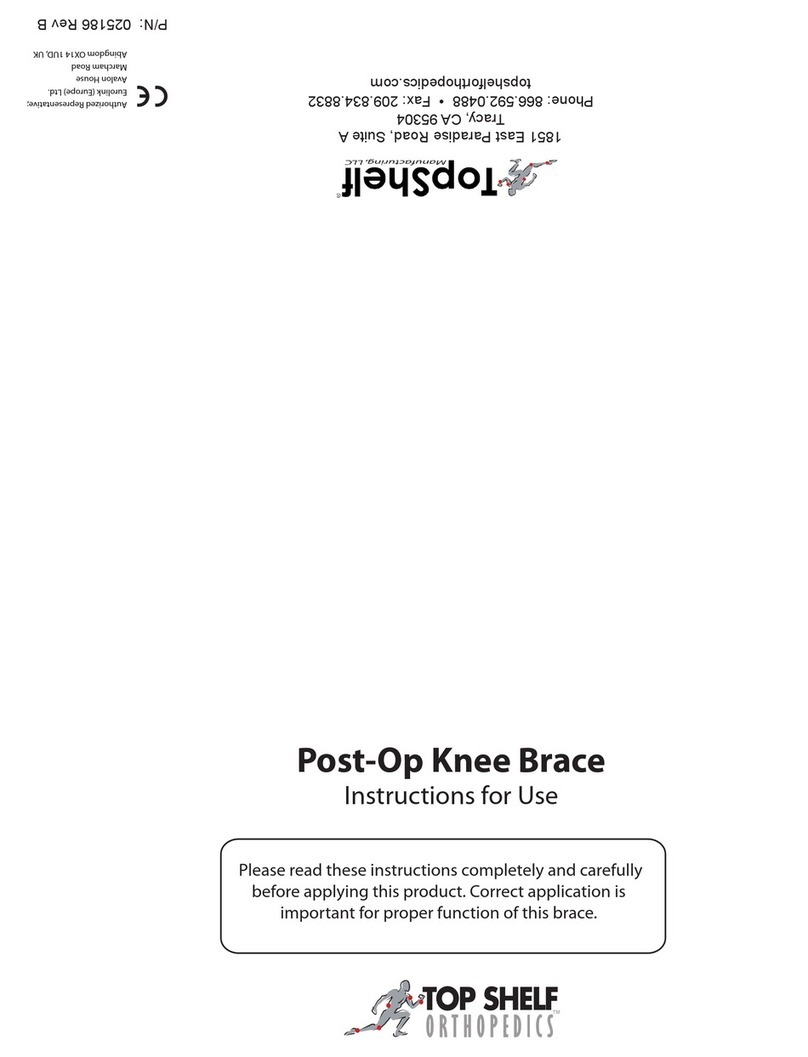
Top shelf Orthopedics
Top shelf Orthopedics Post-Op knee brace Instructions for use
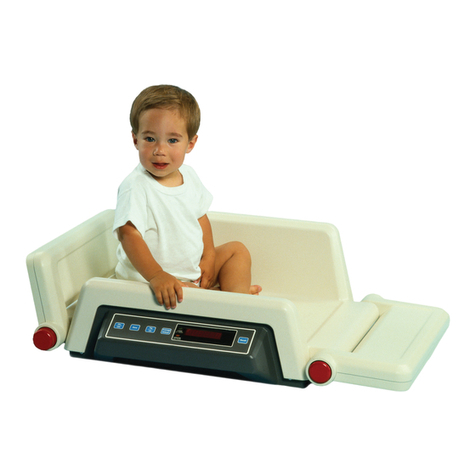
natus
natus OLYMPIC SMART SCALE 50 instruction manual

Cardiac Science
Cardiac Science Powerheart AED G3 Instructions for use

Laica
Laica SB2200 Instructions and guarantee
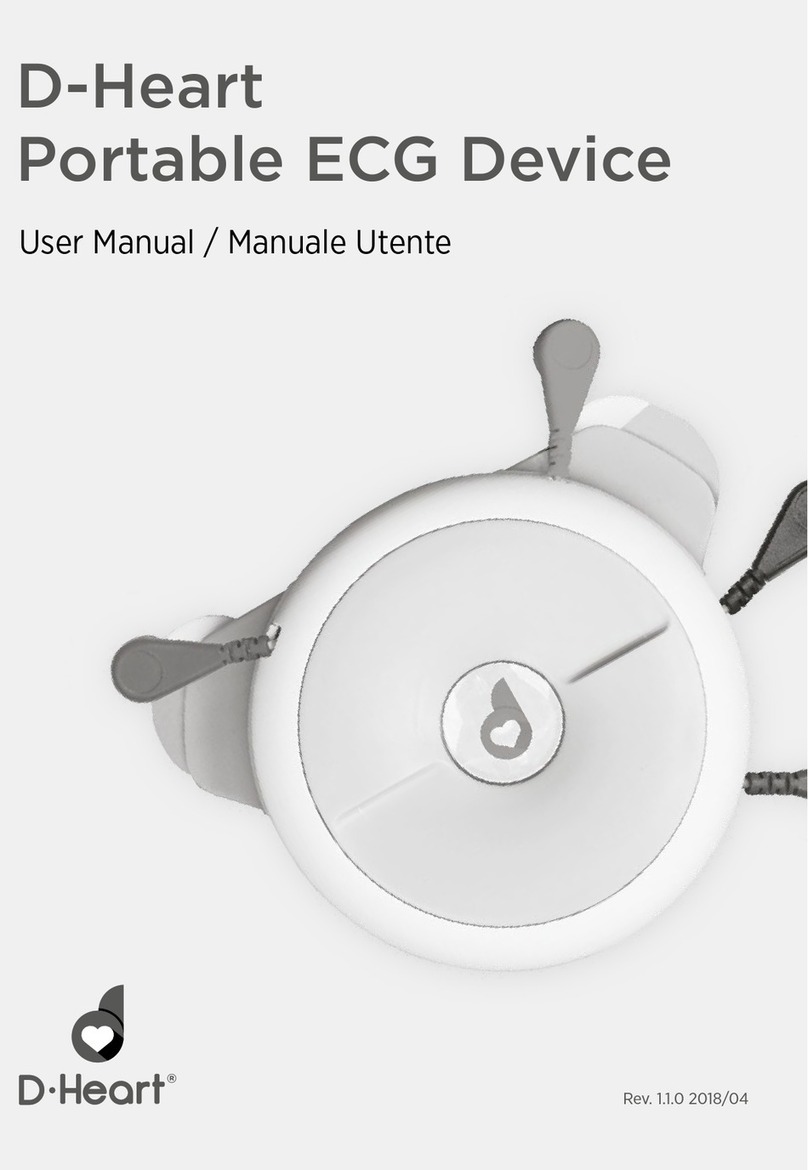
D-Heart
D-Heart Portable ECG Device user manual


